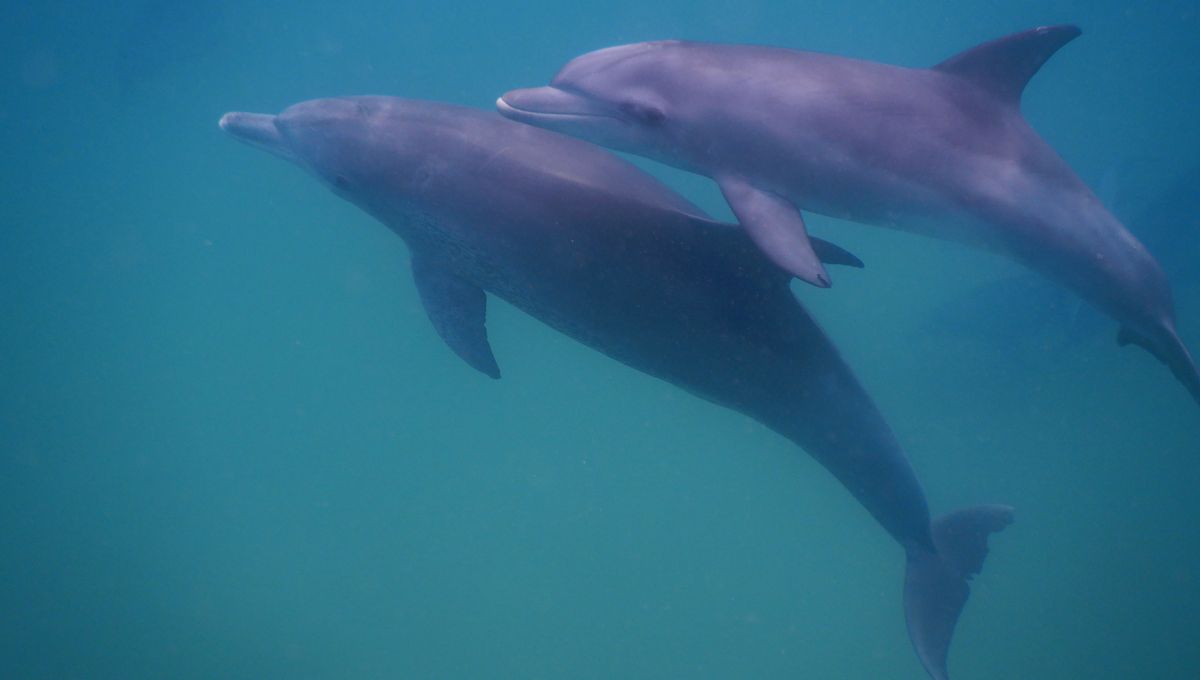
There’s something lurking in the peaceful waters off the coast of Fukui Prefecture, Japan – but it’s not the kraken, or a whirlpool, or even a shark. In fact, experts believe that the culprit behind a spate of attacks on humans in the area, leading to 18 injuries this year alone, is a single Indo-Pacific bottlenose dolphin.
The Indo-Pacific bottlenose (Tursiops aduncus) is a large species of bottlenose dolphin with a long, slender beak and a tall dorsal fin. The males – which this individual is suspected to be – grow to around 2.7 meters (8.9 feet) and weigh in at a maximum 230 kilograms (507 pounds). They have quite a wide range and may be spotted as far afield as the oceans around Australia, to the Persian Gulf and the Red Sea.
Sightings of the species are not a rarity around the beaches of Fukui Prefecture, a region on Honshu Island’s Sea of Japan coast. And, though you might not immediately consider dolphins a menace to humans, dolphin-induced injuries have been increasing in frequency here over the past few years.
In 2022 and 2023, there were a number of reports of dolphin attacks, including one man who sustained several broken ribs when he was rammed and bitten as he swam about 5 meters (16 feet) from the shore of Suishohama Beach.
This year, things have ramped up once again. Japanese news agency Kyodo News reported on August 26 that 18 people had sustained injuries over the summer, including a child who required 20-30 stitches. A man swimming off Mizushima Island was bitten on both hands, marking the second incident in as many days at that particular location. The situation has become so acute that that Tsuruga Coast Guard Office has taken to setting up warning posters, according to the Japan Times.
But is this normal behavior for this species? And could one individual really be behind all these attacks?
Lonely dolphin (male, gray, Sea of Japan) seeks human playmate
“Gentle biting is a behavior that we see often among male bottlenose dolphins in the wild,” dolphin ecologist Tadamichi Morisaka told Nature News. “They do this to maintain the relationship – in this dolphin’s mind, he might have already built a friendly relationship with humans.”
So, it’s kind of… a compliment, then?
“To me, he’s seeking some kind of interaction with people,” Morisaka continued. “If he really wanted to attack, he could have come tackling at full force and chomped down.”
As well as being the brainboxes of the ocean – they can even use shells and sponges as tools – Indo-Pacific bottlenoses are known to be highly social animals. They live in pods of around five to 15 individuals on average, but some are much larger. Males, in particular, form strong bonds or “alliances” with other males that can even last a lifetime.
If these attacks on people really are being carried out by a lone individual, then, it might make sense that this super-sociable cetacean is just looking for a new friend. It hasn’t yet been definitively confirmed, but it does seem likely based on analysis of photos and videos that have been captured of some of the incidents.
The big worry is that these kinds of human-dolphin interactions can get pretty ugly pretty quickly.
Morisaka explained that “dolphins can start asserting dominance through aggressive behaviours such as tackling or mounting people,” which could even be likened to a road traffic accident. We’ve already had at least one report of broken bones in Fukui Prefecture, but thankfully nothing more serious or life-threatening.
In the long-term, Morisaka hopes to develop an acoustic early warning system that picks up dolphin echolocation and alerts any humans in the area to get back to dry land. Right now, the advice to beachgoers from the authorities is clear: if you see a dolphin, stay well away.
Source Link: Japan Sees Spate Of Dolphin Attacks – What’s Going On?